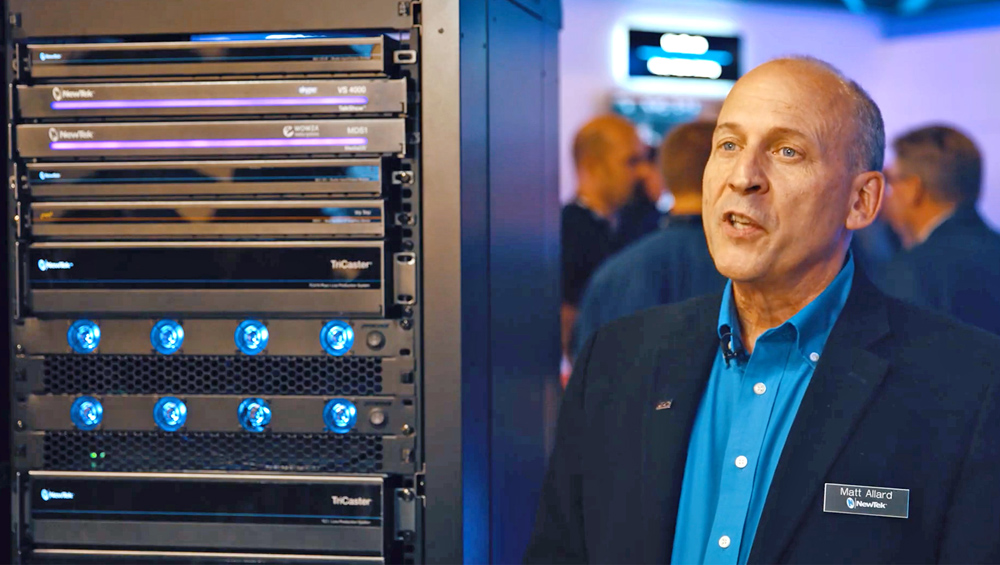
IP Is Multi-User Connectivity’s Only Path Forward

Given the current crisis, it’s easy to think the increase in remote production is due to current affairs. However, this has been in the making for years, and it’s only being accelerated.
The basis for remote production is the movement of IT into media and entertainment using IP for all phases of media content. What began as an experiment has shifted to mainstream usage.
While productions in fixed studios will likely resume, remote access is here to stay. Media organizations will evaluate which productions can be done remotely or how to do hybrid productions with greater amounts of remote connectivity.
SDI-based infrastructures were already diminishing in appeal. The pandemic is hastening their departure. IP is the only viable path forward to enable global, multi-user connectivity.
Rapid Evolution Demands Increased IT Expertise
Media production is evolving to general-purpose computing devices, standard networks and software applications running on all sorts of devices.
An increased amount of IT expertise is needed for supporting all types of production. IT for media has requirements not encountered by other use cases. Production interruptions can occur due to well-intentioned IT personnel applying organizational best practices to media networks.
Common implementations do not contend with the demands of continuous media streaming. Networks need be optimized for constant throughput speeds with adequate buffering, low latencies and targeted security management to provide access through firewalls in and out of locations separated from the usual network.
In a traditional media production environment, redundancy and back up is built around SDI transport. Multiple devices, pathways and entire facilities have been standard procedure. Providing high availability, redundancy and fault tolerance requires different approaches using IP across locations.
IP provides access to and transport of petabytes of data every day. For video production, IP enables bidirectional connectivity between source and processor application at a scale unimaginable compared to using SDI.
Software Is The New Normal
With software, it is possible to virtualize applications to run remotely using cloud infrastructures where accessibility can become global. Organizations can also choose private cloud solutions depending on their business requirements.
Good software enables flexibility, scalability and resilience and can be refined faster than hardware-based products without requiring physical access. Software can be deployed on-premises, in a data center or in a cloud environment. Secure access is possible via web browsers, remote tools and through VPNs. Proximity of production systems, content storage, graphics engines, control surfaces or distribution channels is moot. Production staff can be where the story is, at home, in the office, in the studio or in a vehicle.
Software changes how production devices interact and how people create and distribute. Training in basic IT practices will be needed, but intuitive control and management interfaces for configuration and monitoring do not require engineers or technicians to set up and use.
Audiences expect content access wherever they go. Content creators expect to be able to create whenever and wherever the need arises. While viewers expect media organizations to be agile adapting to different circumstances, production values still matter. Creatives need to understand framing, backgrounds, lighting and microphone placement.
More content will be acquired using smart phones, tablets, webcams and PTZ cameras. Network and application capabilities will accommodate this with improvements coming rapidly.
Content Will Always Be King
Content is why audiences show up. Remote production overcomes physical distances and economic realities. It enables production of live video when talent is separated, locations are hard to access and crews are physically limited.
The final arbiter will always be what viewers will accept and become accustomed to.
Many studios are making the addition of remote guests a straightforward process. Virtual sets give small spaces a versatility for productions. Augmented and virtual reality applications help visualize narratives. Talent in different countries can be joined together on screen and interact in real-time, appearing together.
Experiments using prerecorded sound enhance play in stadiums with no fans. Virtual ad applications can be used on additional spaces during matches. Ads can be linked to social media platforms.
With virtual production control, auditions and performances can be managed remotely for entertainment shows. Recording direct to storage permits producers to edit before final viewing. Automation of workflows enables complex rundowns to be executed with less effort.
The demand for content continues unabated. Making remote production feasible and economical with robust, scalable and agile solutions satisfies this dynamic. Shifts in technology, viewer habits and social interaction is accelerating acquiring media from anywhere to be consumed everywhere.
This is the new normal, the new expectations. Now is the time to reach out to partners in the live production workflow space. Ask what they’re seeing — and inventing — in response to these new demands, and prepare your organization for the path ahead.
Matt Allard is senior product marketing manager for The Vizrt Group.


































Comments (0)